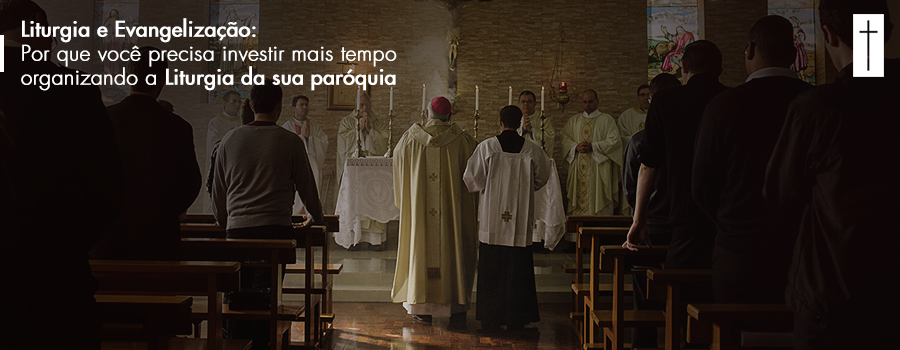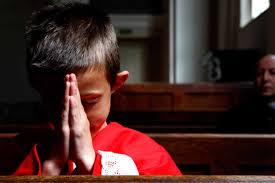Reading time: 15 minutes
Although the main function of the Liturgy is not to evangelize, if we are facing a Eucharistic Celebration lived with zeal and reverence and, from the liturgical, organized and harmonious point of view, it is very clear that all this will favor the experience of the first announcement for those who are approaching faith and personal experience with God.
“The Church evangelizes and is evangelized with the beauty of the Liturgy, which is also a celebration of the evangelizing activity and the source of a renewed impulse to give itself” (Pope Francis, Apostolic Exhortation Evangelii Gaudium, 24).
Because it is a vital aspect of the Church’s life, the liturgical dimension deserves commitment, investment of time and labor so that it can be this sign of the beauty of Christ. As a reminder of what deserves attention in the organization of the Liturgy in a community, we separate in this text some points for reflection.
 Liturgical Team in communion with the other pastoral
Liturgical Team in communion with the other pastoral
The saying goes that a swallow does not make summer, does it? The liturgical life of a parish is something so grand and at the same time so simple, that it must always walk in communion with the other pastoral and sectors.
Often there is not much talk and alignment of strategies for the development of actions among pastoral. Example: a music team that does not relate to the liturgy. This can lead to a mismatch in the celebrations, because the liturgy prepares one thing and the music ministry can prepare something that is unrelated to the proposal, and vice versa. This can happen to several other pastoralists.
Therefore, our suggestion is that the liturgy team always keep the channels of dialogue open with the other pastoral and, in addition, seek to align strategies so that everything is lived in unity and communion.
The sacred space and the reception
Busy life, routine, haste and stress are not the “privileges” of a few. The present generation has different rhythms of life, but in general, a lot of people are immersed in this context. And when they can visit a church, they look for a peaceful, quiet and welcoming environment. Seek an experience with God’s comfort!
Sacred space, zeal with liturgical vestments, and welcome can contribute to this expectation. On this, Pope Francis also teaches us: “The beauty of everything that is liturgical is not reduced to the adornment and good taste of the vestments, but it is the presence of the glory of our God that shines in his living and comforted people.”
In general, it is very important to observe how the space of your community is, regardless of the resources available for investments or the social class in which it fits.
A clean, affordable, beautiful and organized environment make all the difference. From the smallest details to the architecture, the space must be oriented to favor the encounter with God. From this assessment, ask yourself how you can act to improve or even transform this context in your community.
Children and the liturgy
For parents, the challenge of educating in the values of faith, showing that the Church is a place of experience with God and that there are some protocols to be observed there. And this requires repetition, love and understanding. The challenge of teaching about silence without harming the spontaneity that is characteristic of the little ones. For the community, there is the exercise of charity and generosity, since it is necessary to give children access to the symbols of faith, to the liturgy.
The Liturgy team must learn to cope with all expectations and creatively transform liturgical celebrations into occasions where everyone can live under that grace.
Our tip, especially for the parents, is to initiate the child in the catechesis lived at home, in the called Domestic Church. Just as one teaches to read, to sit at the table to eat, to speak properly, one must teach one to pray as well. And there is nothing more effective from an educational point of view than learning from good examples. Therefore, parents should cultivate spiritual life at home. It will make a big difference when children see themselves in the Church environment.
For the Liturgy Team, the recommendation is from the Directory for Mass with Children, document of the Church prepared by the Sacred Congregation for Divine Worship (1973). “[…] care must be taken so that children do not feel forgotten because of their inability to participate and understand what is accomplished and proclaimed in the celebration. Take their presence into account, for example, by addressing them with certain appropriate ammunitions at the beginning and end of the Mass, in some part of the homily, etc. ”
It can not be forgotten that in the process of welcoming children, the Church gains the trust and affection of the parents as well, because it overcomes any kind of hostility and indifference towards the family, which is so precious to God and to humanity .
These are only 3 points for reflection, but even in this internal evaluation process, it is possible to identify several others. Make the experience of bringing together the leaders of your community to share experiences, expectations and proposals and thus make the liturgical life fully fulfill its role.








